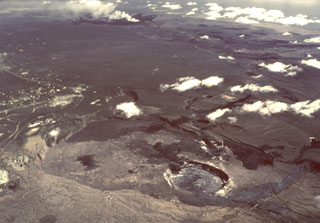Report on Kilauea (United States) — 16 August-22 August 2006
Smithsonian Institution / US Geological Survey
Weekly Volcanic Activity Report, 16 August-22 August 2006
Managing Editor: Sally Sennert.
Please cite this report as:
Global Volcanism Program, 2006. Report on Kilauea (United States) (Sennert, S, ed.). Weekly Volcanic Activity Report, 16 August-22 August 2006. Smithsonian Institution and US Geological Survey.
Kilauea
United States
19.421°N, 155.287°W; summit elev. 1222 m
All times are local (unless otherwise noted)
During 16-22 August, lava from Kilauea continued to flow off of a lava delta into the ocean at the East Lae'apuki and East Ka'ili'ili entries. Incandescence was visible from the East Pond and January vents, South Wall complex, and Drainhole vent in Pu'u 'O'o's crater during most of the reporting period.
A recent leveling survey revealed an inflationary trend at the summit of Kilauea, in areas S of Halema'uma'u crater. Elevations have increased 11 cm in the past 6 months and continued to increase during the reporting period.
Geological Summary. Kilauea overlaps the E flank of the massive Mauna Loa shield volcano in the island of Hawaii. Eruptions are prominent in Polynesian legends; written documentation since 1820 records frequent summit and flank lava flow eruptions interspersed with periods of long-term lava lake activity at Halemaumau crater in the summit caldera until 1924. The 3 x 5 km caldera was formed in several stages about 1,500 years ago and during the 18th century; eruptions have also originated from the lengthy East and Southwest rift zones, which extend to the ocean in both directions. About 90% of the surface of the basaltic shield volcano is formed of lava flows less than about 1,100 years old; 70% of the surface is younger than 600 years. The long-term eruption from the East rift zone between 1983 and 2018 produced lava flows covering more than 100 km2, destroyed hundreds of houses, and added new coastline.
Source: US Geological Survey Hawaiian Volcano Observatory (HVO)

